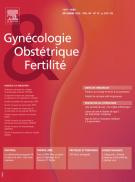Quelles hormones promeuvent le cancer du sein en post-ménopause : estrogènes, progestatifs, insuline et/ou adipocytokines ? - 05/01/10
Plan
Vol 38 - N° 1
P. 1-3 - janvier 2010 Retour au numéroBienvenue sur EM-consulte, la référence des professionnels de santé.


